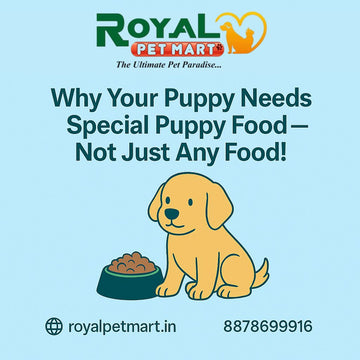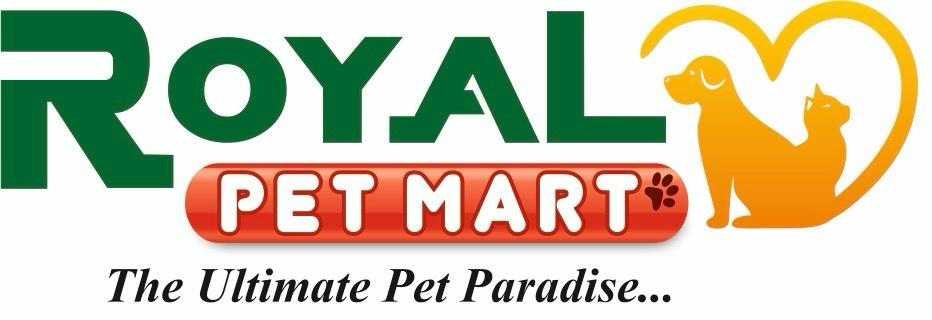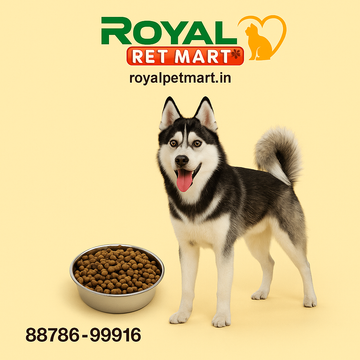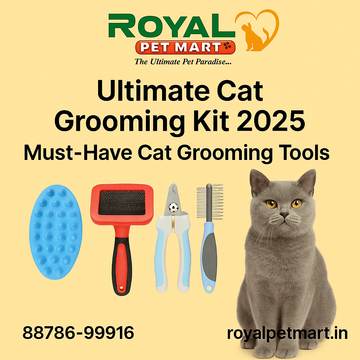Why Your Puppy Needs Special Puppy Food — Not Just Any Food!
by Royal Pet mart on Apr 29, 2025

Introduction
I’ll never forget the day I brought Luna, my little Labrador pup, home. She was this tiny bundle of energy, and I was so excited to be her new mom. But as the days went by, I realized puppies aren’t just small dogs—they have unique needs that caught me off guard. One of the biggest lessons I learned was that feeding her the right puppy food is critical for her healthy growth. Unlike adult dogs, puppies need special nutrition to build strong bones, a sharp mind, and a robust immune system. If you’re wondering what to feed puppies or what should I feed my dog as a new pet parent, this blog is for you. I’ll share my journey, including what I’ve discovered about puppy nutrition chart essentials and how RoyalPetMart helped me find the best options for Luna.
Understanding Puppy Nutrition
When Luna was just a few weeks old, I noticed how fast she was growing—almost overnight, it seemed! My vet explained that puppies have higher energy and calorie requirements than adult dogs because their little bodies are working overtime to develop. I learned that puppy growth food needs to be rich in protein and fat to fuel that rapid expansion, especially for an active breed like a Lab.
There are key nutrients I had to focus on too. Protein helps build muscles, while fats provide energy—Luna’s coat got so shiny once I got this balance right. DHA, an omega-3 fatty acid, is a big one for brain development; I could see her getting smarter every day after switching to a food with it. Calcium and phosphorus are vital for strong bones, but my vet warned me about overdoing it—too much can cause issues like hip dysplasia. Proper balance is everything to avoid growth problems, and I leaned on a puppy feeding guide from RoyalPetMart to get it right for Luna.
How Puppy Food is Different from Adult Dog Food
I used to think I could just feed Luna the same dog food I’d give an adult dog, but I was so wrong. Puppy food is a whole different ball game. It’s more nutrient-dense, packed with the extra calories and proteins puppies need for their rapid growth stages. When I compared labels, I saw that healthy puppy diet options had higher levels of vitamins and minerals tailored for young dogs, which adult food just doesn’t provide.
The texture is different too—puppy food often comes in smaller kibble sizes or softer textures, perfect for Luna’s tiny teeth when she was starting out. I noticed the kibble was easier for her to chew, especially at two months old. It’s also formulated to support specific development areas like brain growth with DHA, bone strength with calcium, and muscle development with protein. Adult dog food can’t keep up with that, and I learned the hard way that skimping on this can stunt a puppy’s progress. Switching to a best puppy diet made all the difference for Luna.
Risks of Feeding Adult Dog Food to Puppies
I made a mistake early on by giving Luna some of my older dog’s adult dog food when I ran out of her puppy formula. It didn’t take long to see the risks. Adult food lacks the nutrient density puppies need, which can lead to deficiencies or imbalances. My vet told me this could cause stunted growth, and I worried Luna might not reach her full potential as a Lab.
There’s also a risk of bone problems if the calcium and phosphorus levels aren’t right—too little can weaken her frame, while too much from adult formulas can strain her joints. I noticed Luna seemed less energetic too, and her immune system might have weakened; she got a little sniffle that cleared up only after I switched back. Digestive issues popped up as well—her tummy was upset until I got her on the right puppy eating schedule with proper puppy food. It was a wake-up call to stick to what’s designed for her age.
What to Look for in Quality Puppy Food
After that scare, I got serious about choosing the best puppy food for Luna. The first thing I check is if it’s AAFCO-approved for “growth” or “all life stages”—this guarantee ensures it meets the nutritional needs for puppies. My vet stressed this, and I’ve stuck to it ever since. I found plenty of AAFCO-approved options on RoyalPetMart, which gave me peace of mind.
I also look for high-quality protein sources like chicken, beef, or fish as the first ingredient—Luna thrives on this, and her muscles are getting stronger. Fortified with essential fatty acids like DHA and vitamins like A and E keeps her brain sharp and immune system robust. I avoid foods with artificial additives; puppy food for sensitive stomachs became a priority when Luna had a brief reaction, and RoyalPetMart helped me find clean formulas. It’s all about picking what foods are good for dogs at this stage.
Special Considerations
Every puppy is a little different, and I’ve learned to tailor Luna’s diet accordingly. For large breeds like Labs, I use a puppy growth food formula with controlled calcium to support her big bones without overdoing it—puppy feeding chart Labrador guides were a lifesaver here. Small breeds might need smaller kibble, which I’ve seen friends use for their tiny pups.
If your puppy has allergies or a sensitive stomach, like Luna did briefly, look for puppy food for sensitive stomachs or grain-free options. I tested a few, and she settled on one that worked. Transitioning to adult dog food is another step—I plan to start around her first birthday, mixing it slowly over a week to avoid tummy upset. My vet gave me a puppy feeding plan to follow, and RoyalPetMart has transition tips that made it smooth. It’s all about matching what to feed a 2 month old puppy needs as she grows.
Conclusion
Feeding Luna the right puppy food has set the foundation for a long, healthy life, and I can’t stress enough how important that is. From meeting her higher energy needs with a healthy puppy diet to supporting her brain and bones with key nutrients, special puppy food beats generic dog food every time. I’ve seen the risks of skipping it, and switching back saved her from potential growth issues.
Every puppy is unique—Luna’s a Lab with specific needs, but your pup might be different. That’s why my final tip is to always consult your veterinarian to choose the best formula, whether it’s what to feed a 1 month old puppy or a 3 month old puppy. RoyalPetMart offers a fantastic range of options to explore, from puppy nutrition chart guides to quality brands. Let’s give our little ones the best start they deserve—happy feeding!




